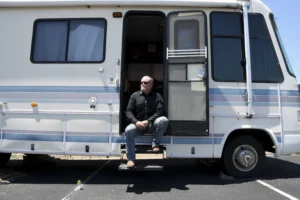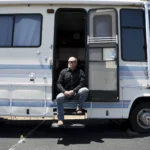FRIDAY FOCUS: Wyoming Department of Corrections Director Shares Challenges, Future Goals (Part 1)
Staff shortages at Wyoming state prisons a primary concern
- Published In: Other News & Features
- Last Updated: Apr 28, 2023

By Shen Wu Tan
Special to the Wyoming Truth
When Dan Shannon accepted a job as a corrections officer in Pennsylvania in 1985, he was 21 years old and just looking for secure work. Little did he know it would morph into a lifelong career.
In 2010, Shannon became prison administrator of the Wyoming Department of Corrections (WDOC) and was promoted to director three years ago. In this role, Shannon, 58, oversees five state prisons, around 2,200 incarcerated inmates, 6,100 individuals under parole, 850 current employees and a biennial budget of $262 million.

WDOC is short over 200 employees, but that hasn’t stopped Shannon from launching education and mental health initiatives, among others.
Shannon recently spoke with the Wyoming Truth about current challenges and new programs at the WDOC. What follows are excerpts from the interview.
What have you learned on the job?
Shannon: When I began, I didn’t understand the real overall impacts of working in corrections and how we’re responsible to ensure that the community [is] safe as well as ensure that we’re trying to role model positive behaviors. The biggest thing that I learned…is that we have to balance empathy and compassion with the security of our communities and their needs.
Tell me about some new initiatives.
Shannon: I created a veterans’ program at our Wyoming Honor and Conservation Camp located in Newcastle. We have over 230 honorably discharged veterans in our agency, and so I am creating programs that are specifically for veterans. I’m placing them in Newcastle, and also that way they are established with the VA [Veterans Affairs] when they get released.
We’re working really hard on substance abuse treatment programs. They’re in-reach programs, also at Newcastle. I relocated . . . the ladies’ ITU [intensive treatment unit] from Lusk to Newcastle, and the in-reach program is really tied in with community providers when they get released. And I believe we’re really going to see some great success from there.
This past year, we created a youthful offender transition program. It was the old boot camp, but I changed it into a programming position. And I also created it for the females. So, we have that in Lusk, as well as at the Wyoming State Penitentiary in Rawlins. We’re seeing some great success with graduation rates and folks not returning.
. . . I’m going to begin the mother-child program for ladies [who are incarcerated] to have their children at Lusk….That means incarcerated mothers who are going to deliver children at the time of their incarceration period, if they meet certain criteria, the child could stay with them for up to a period of 18 months. It also means that…incarcerated mothers, as a part of their reentry program as they are working towards their release, will also be able to have their children from the exterior to come in and visit with them.
What education and mental health initiatives are in the works?
Shannon: We are actively involved with the University of Wyoming. We have applied and received Pell grants to provide college-level education for the individuals. We are currently in the process of putting WIFI throughout our institutions…. We received a grant, and I’m ordering tablets for inmates to work on. That way, all can participate in their education classes.
Another initiative I’m working on currently is with our medical providers to provide a suicide hotline for inmates…. That could also include families that can call in if they have concerns for their loved ones.
Can you describe the current staffing challenges?
Shannon: We, as a whole, are working very hard on retention of staff. For the past two years, our retention rates have increased. However, we’re not just receiving applicants for our positions. We currently have 216 vacant positions in the department of corrections…. We need to become competitive with local jails and prisons [in regards to pay], as well as . . . correction agencies surrounding our state. . . . We’re paying our correctional officers $17.95 currently, and the new rate will take them, I think, to $18.34 an hour.
What jobs need to be filled?
Shannon: Our three primary [areas of vacancies] are correctional security staff, our food service workers and our maintenance staff. Our retention rate has gone up: The uniform staff retention rate for 2021 was 79%; in 2022 it was 81%…. But we’re just not getting applicants. …. It’s a very difficult job working inside a correctional facility…and the pay isn’t competitive enough to attract people to apply.
How are you addressing the staff shortage?
Shannon: We have interstate compact employees…. We’re utilizing that for telework. We have our assessors for drug and alcohol abuse. These are master-level positions. I’m allowing them to telework, live in different regions. I changed that our supervisors throughout our department…can work in different locations. We created a transfer policy here so that people can move throughout the state if they so choose.
We’re allowing our officers to wear jeans with their uniforms. We’re giving wellness breaks where people can go and socialize …. We’re doing [staff] surveys at three months, six months, one year and three years [of employment]. We’re looking at the data…[and] we’re having community-type meetings to see what staff wants and needs are.
How is the staff shortage affecting the inmates?
Shannon: . . . It certainly has an impact [in] that operations don’t run as smoothly or as fast as they can when we’re fully staffed. And number two…it gives the impact that maybe we have to cancel recreation tonight or we have to cancel some type of program . . . And when you start canceling programs, it does have a negative impact on the inmates.













